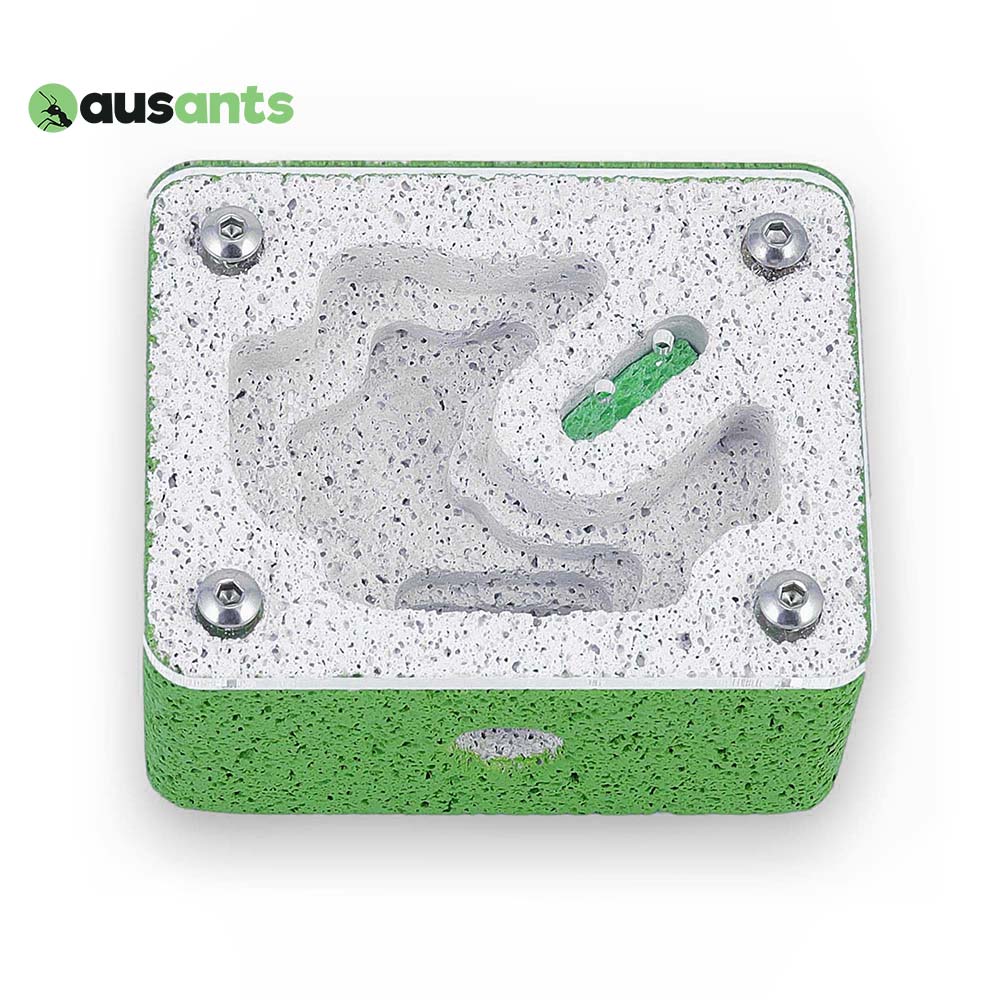AntHouse Acrylic/Sand Starter Kit
1x Basic tank 200mm x 100mm x 100mm.
1x Acrylic lid.
1x 250g Mixed sand/clay for the Sandwich.
1x 50g Sand for decoration. Colour subject to availability.
1x 50g Stone granules as decoration for the foraging box.
1x Trough.
1x Water trough.
1x Plastic pipette.
The Anthouse Acrylic/Sand Starter Kit is a small acrylic tank with a sheet of acrylic stuck on one side (sandwich), leaving a gap of 1.5 cm (the ants will live there), and an acrylic lid. You can put the food on the floor of the outworld. You can use extra sand and small plants or stones as decoration.
Installation: Installation is easy. Put the sand into the sandwich. Don't forget to wet the sand before you put the ants inside the nest. The sand itself will block the connection hole of the sandwich. This hole allows the ants to access the foraging area and the output of excess water. Once the ants are digging, they will find it and use it.
Caution: You don't have to wet all the sand, just a part of it, as we run the risk of getting a muddy place for the ants if we moisten it all. For example, about 5-10ml of water would be enough, depending on the time of the year (higher temperatures involve more vaporisation). The amount of water needed may vary because of the temperature. You must control it in a logical way. Don't forget to keep, at least, part of the sand wet.
Once you have the kit ready, you can make a small hole in the sand with a stick to make easier for the ants the construction of the galleries. Then you can put the ants inside the ant nest, pouring out the content of the test tube directly into the sandwich. Everything done with maximum care and, if possible, near the hole you previously made. This way when they fall over the sand they have a refuge.
Remember to block the side connection hole with cotton or with a 9/13mm rubber stopper. This hole is used to connect, by a flexible tube, another nest or an auxiliary foraging box for moves or extensions.
It's very important to put the food near the ants. Don't hesitate to put the food as close as possible to the hole or area where the ants are. Be careful and prevent the sand from getting dirty. You can check if the ants eat by observing whether its gaster (backside) is swollen or not, because ants store food as a reserve inside a social stomach.
If the colony is small the ants might not use the foraging box. That's because small colonies, by nature, don't go far away from the ant nest to prevent being attacked. So, if the ants don't use the foraging area, take a small and flat piece of aluminum paper, put it over the sand to keep it clean and put food and water on it. Place it as close as possible to the ants. Easy access to food and water is vital for the ants. Keeping the sand clean is very important too because organic debris can get rotten and cause diseases.
Food (generic data): Ants do not eat solid food, only watery food. All substances such as honey, protein syrup, pasta, etc... must be well mixed with water before giving it to the ants. This food must be removed the next day. Don't forget ants need protein to live. They can find protein in insects, meat, animal products, etc... or in seeds for the seed eater species.
Suitable for ants colonies with more than 50 workers in small species or 25 in big species.
Warning: Maintenance of the ant nest is under responsibility of the customer. The wear and tear of the materials is not covered by warranty.
CAUTION: Don't clean with alcohol or any other productother than soapy water. The acrylic material could be weakened. Don't even use talcohol (talcum powder dissolved in alcohol). If still used, it will be under the responsibility of the customer.




































